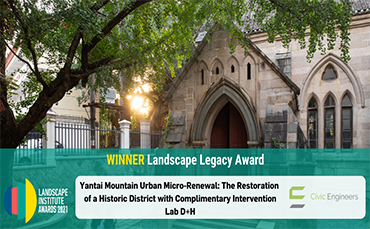


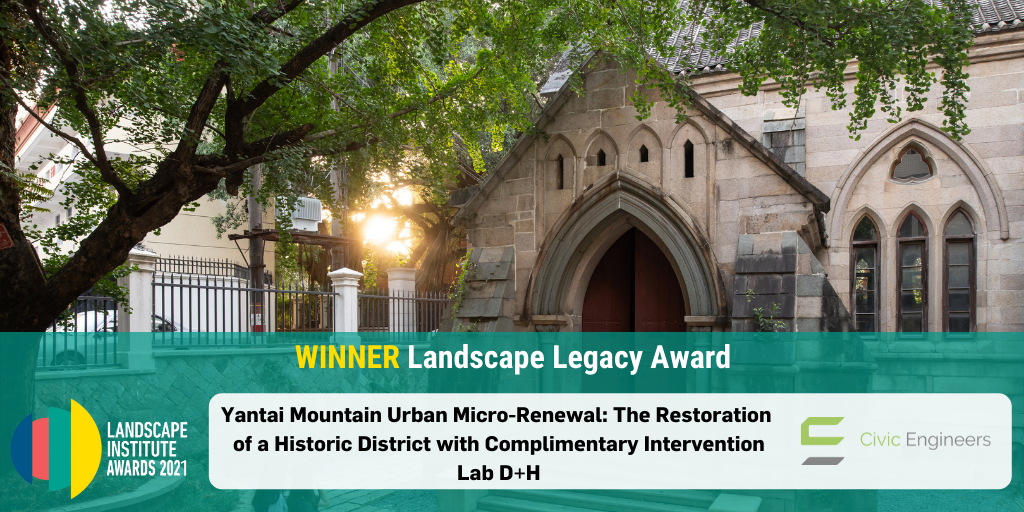
PROJECT OVERVIEW
The revitalization of the Yantai Mountain community is urban renewal on a micro-scale. The design approach is restrained by respect for the history of the site. Exploration of the site’s cultural lineage resulted in the restoration of the original space and the preservation of native plants. This is an urban renewal project that respects history and celebrates the past. The design team undertook a comprehensive survey to ensure the accurate restoration of the historical spaces at the site. Instead of obliterating all traces of the past, micro-renewal can honor the history of Yantai Mountain while still improving both the natural environment and the resident’s quality of life. In today's world, sustainability in design and construction is essential. The design team closely followed the principles of sustainability. Sustainable restoration can create a healthy and modern community. Demolition waste was reused for use as a building material. The design combines the best features of sustainable restoration methods for the historic mansion with the designs used in the public realm for the hill's design work. The design helps maintain the historically significant parts of the past, yet still injects new interpretations of the present for contemporary residents.
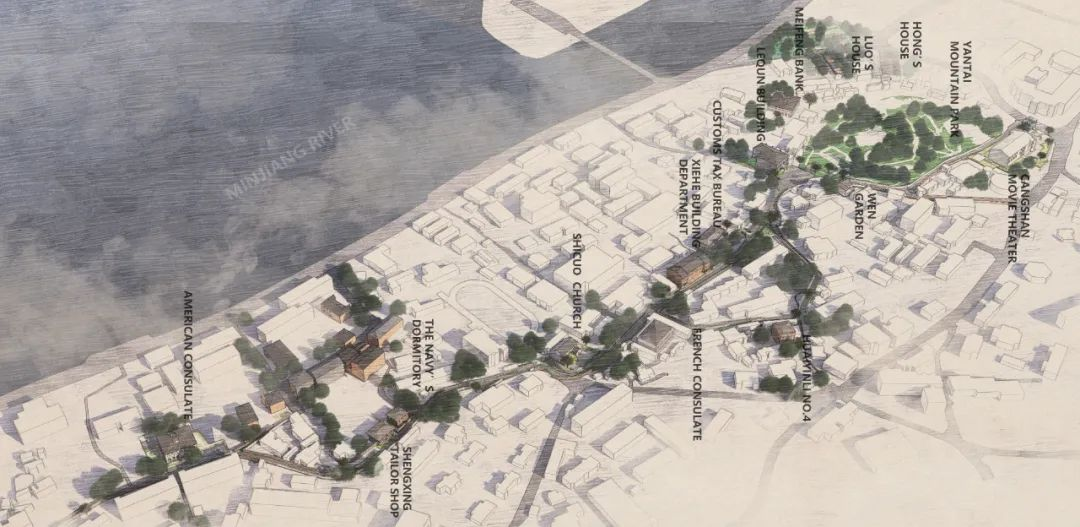
Aerial view
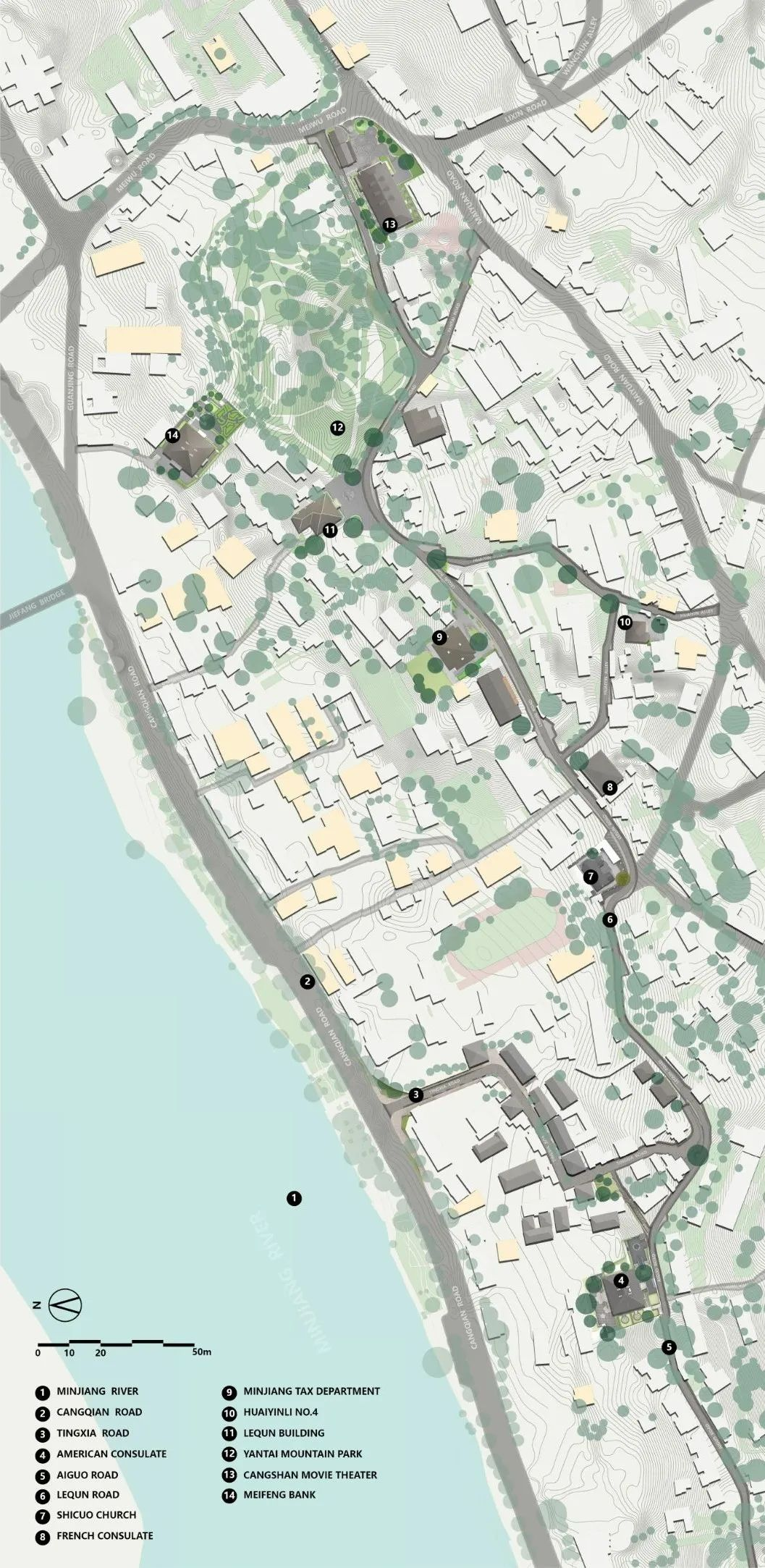
Site plan
SITE HISTORY
Yantai Mountain is a symbol of Fuzhou history and culture as it occupies an important spot on the banks of the Minjiang River, In the past, it was the site one of only a few treaty ports that were open to foreign trade and promoted economic and cultural exchange between China and the West. Lequn Road is Yantai’s main road and runs along the side of Yantai Mountain. Over time, the road has e been seriously damaged. The poor condition of Lequn Road inevitably led to additional problems. Following the path of the aging road, aging infrastructure, and vacant retail spaces led to a high vacancy rate of retail businesses. Revitalizing the present-day community in Yantai Mountain and sustaining the city's cultural heritage is essential a priority of the design plan.
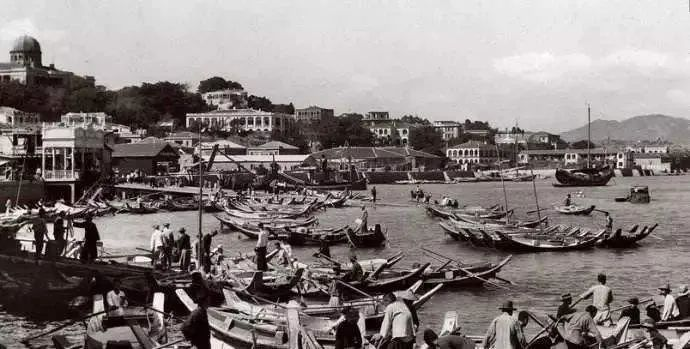
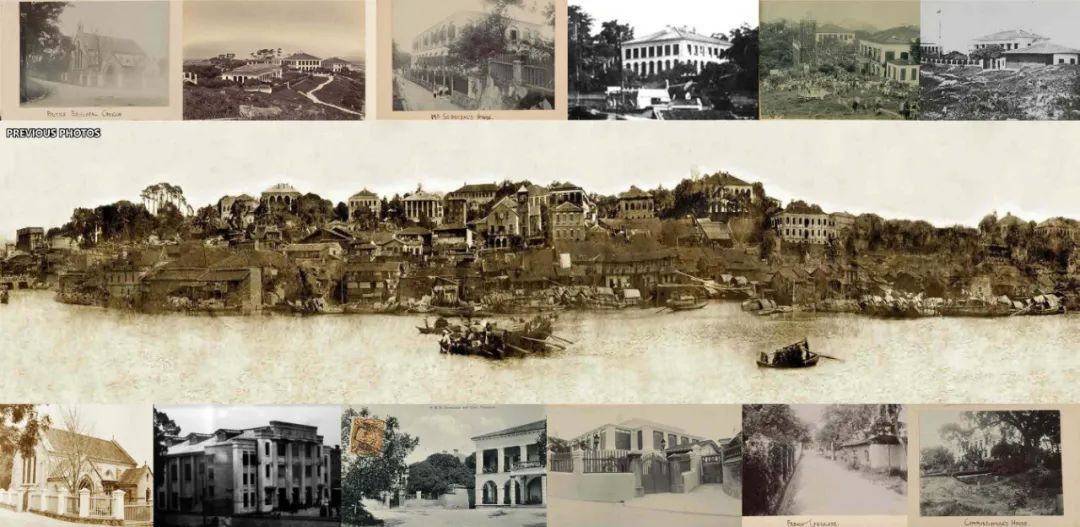
Old photos of Yantai Mountain community
DESIGN CHALLENGE
Numerous historical sites and large residential communities have varying requirements for renovation methods. The reconstruction of the public space presented a fundamental challenge for the site designers. After the design team had done a comprehensive survey of historical documents and a series of interviews with residents, a strategy was adopted. The design team decided to restore the large-scale historical district with the intervention of landscape micro-renewal. The design team carefully fused restoration methods applied at the historic mansion yards with adaptive reconstruction in the public space. This combination of old and new elements preserves and celebrates site's historical significance while also injects new interpretations.
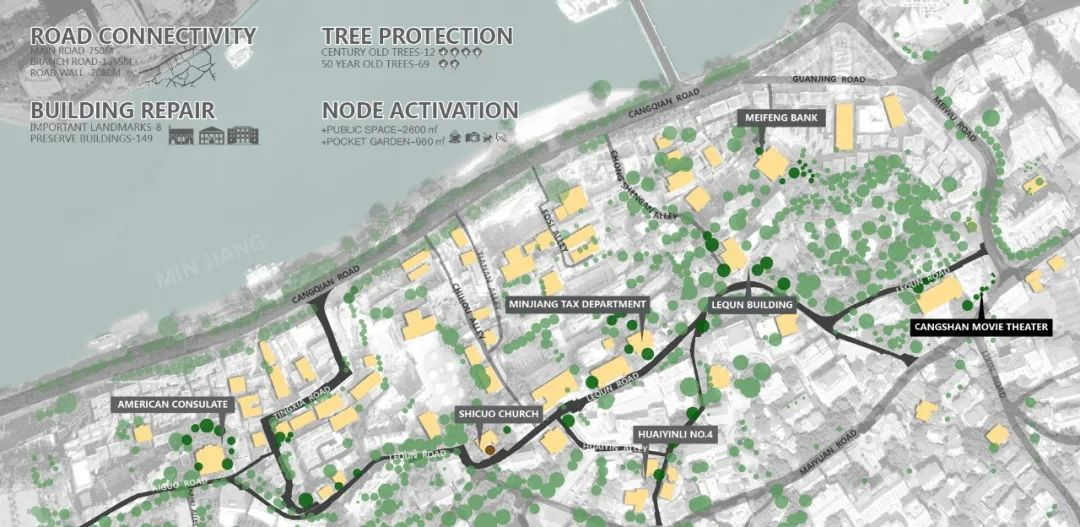
Historic and cultural resources within the community
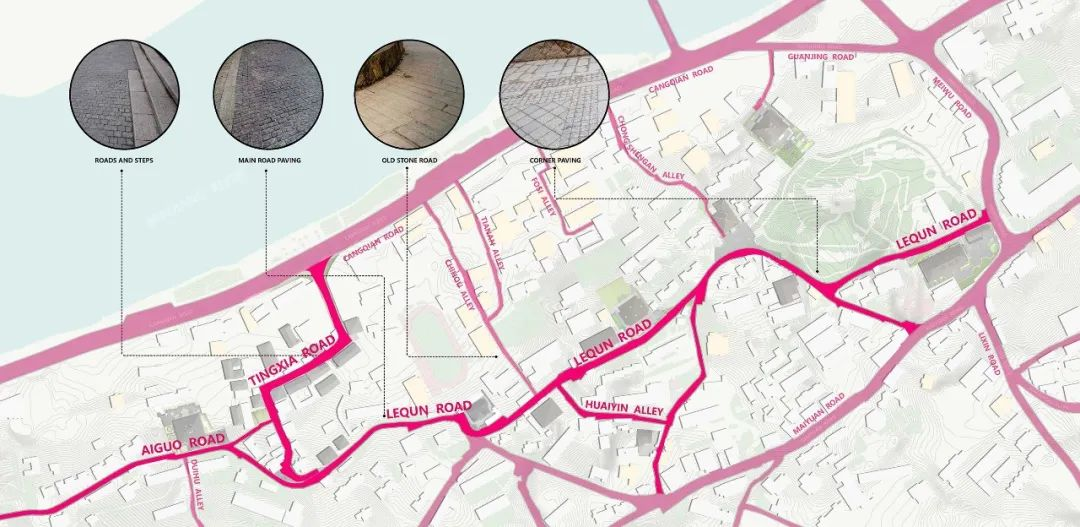
Existing streets and alleys
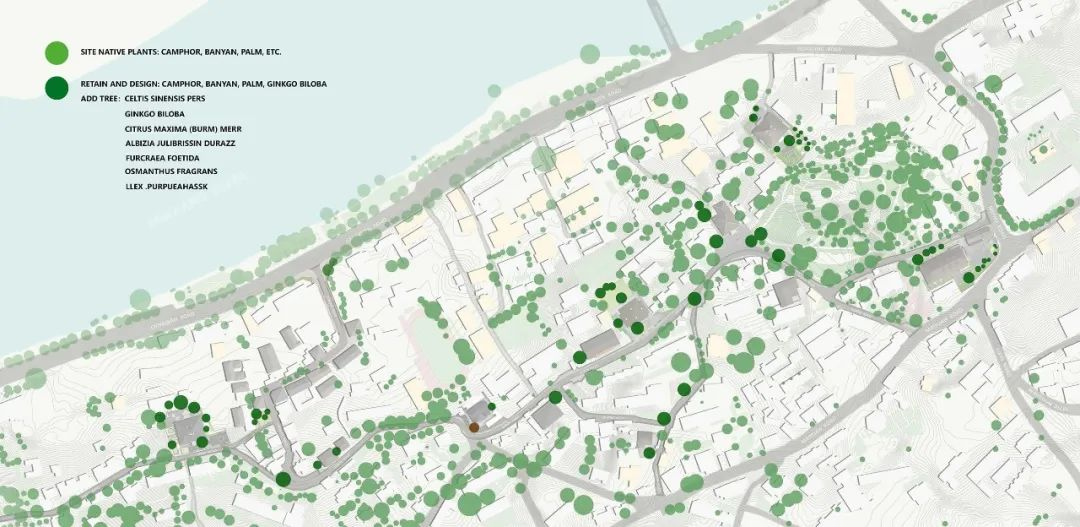
Existing trees
THE LANDSCAPE DESIGN OF ALLEYWAYS
The road network of Yantai Mountain consists of the main road and multiple bypasses. To stimulate activity and improve local conditions the designers added a series of recreation areas along the branches. These open public spaces are defined by the paving which forms a stay area and a passage area. The locals are guided by the main road to enter the pocket parks. Many pocket parks have been created in the alleyway's dead-end spaces. additionally, revitalized open spaces provide additional recreational space.
The design of the stone steps dissolve the complex difference in terrain within the original site and cleverly link the upper and lower levels. The ancient leaning tree as an important and unique landscape landmark within the site. Plants soften the buildings' coldness and provide a harmonious environment for the residents. The road network links the pocket gardens. One movement and one static are connected in the signs and stone inscriptions along the way, creating a community's creation. With moving scenery union, people can naturally interact with others and their surroundings in the process of moving up the hill. It enhances the vitality of the space and promotes community engagement. Lequn Road serves both as a vehicular road and a pedestrian walkway.
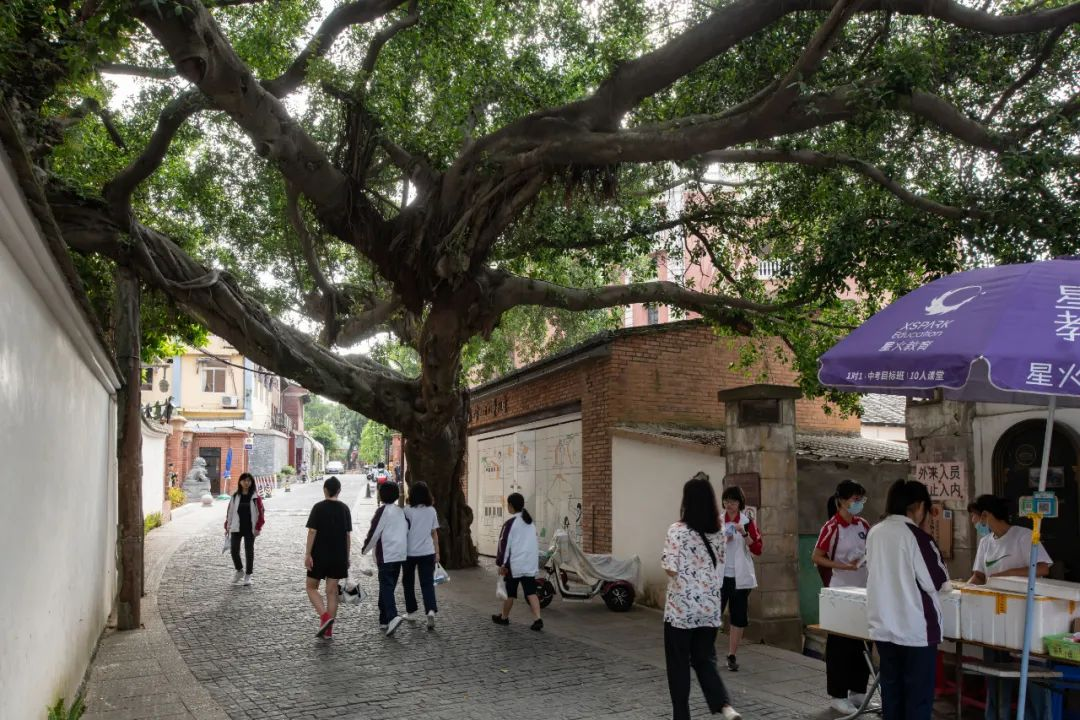
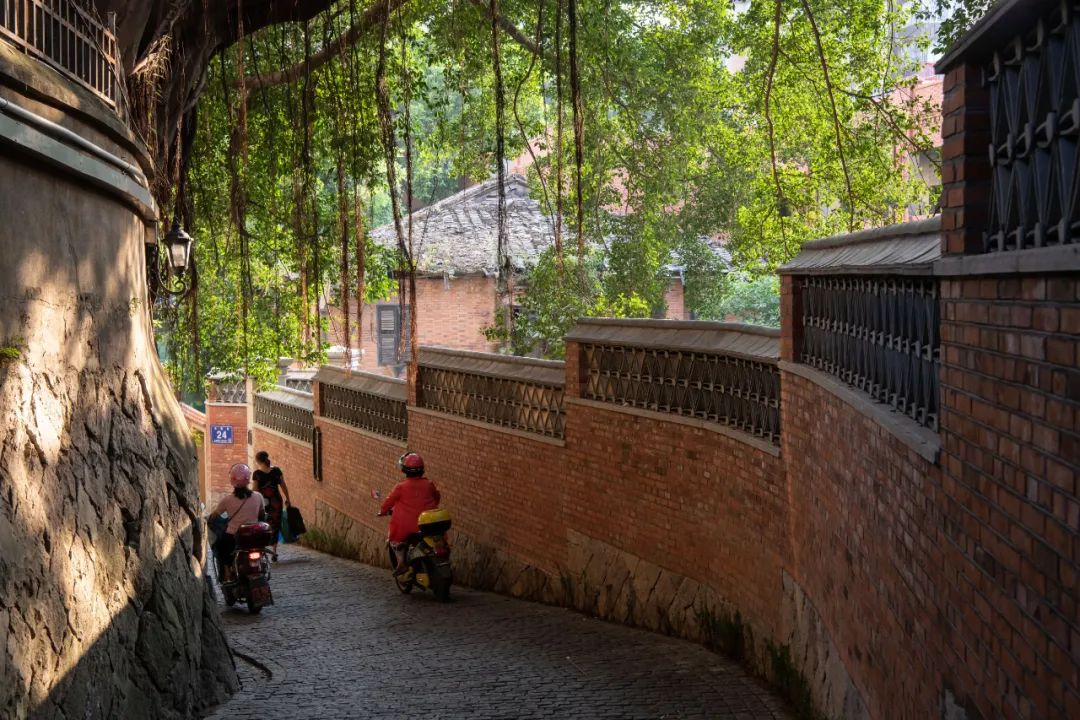
The alleys after renewal
NODE DESIGN
The design team followed the principles of sustainability to restore the Yantai community. Thus, some waste materials from the site were reused as building materials. The masonry rubble paves the sidewalk, tiles are transformed into light-transmitting windows, and sisal stones are turned into planting bowls for the site. The local plants and materials maximize the feeling of historic heritage by linking the present with the past in the design.
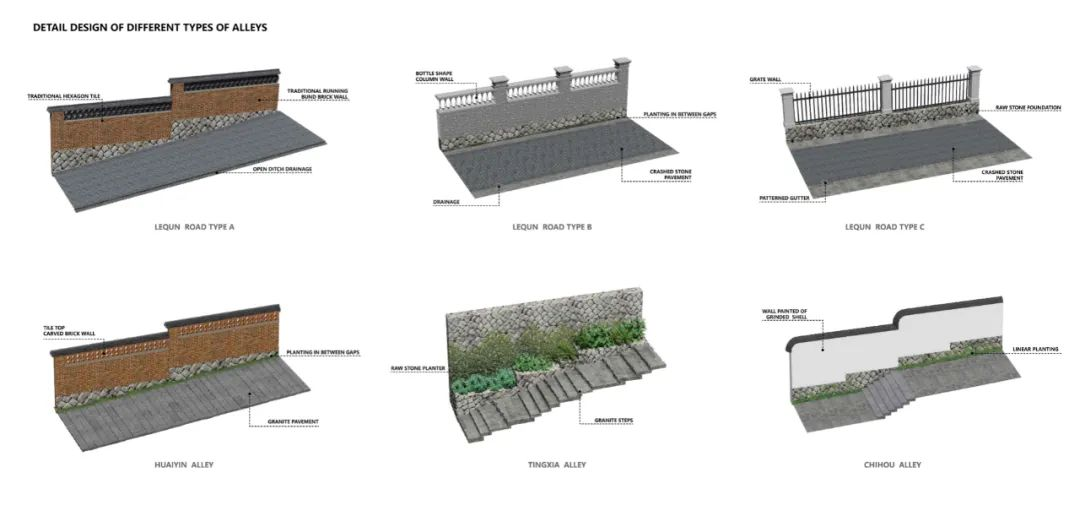
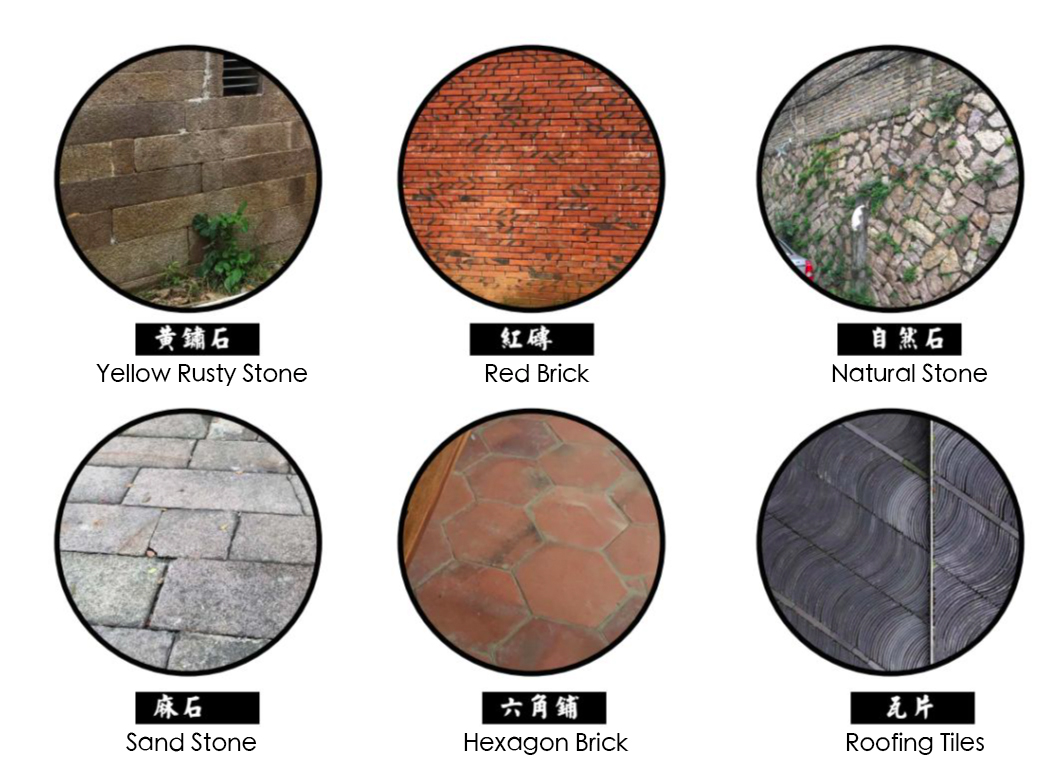
Ancient banyan and ginkgo trees line Lequn Road. The design ensures the protection of the ancient trees and other local plants. A complementary and supportive relationship between the landscaping design and the overall design for the site ensures the protection of these ancient living treasures. In the public realm, the historic Nine Alleyways' alignment was retained, and restoration of the stairs and pathways was accomplished. When the original granite steps were intact they were reused, and gaps between them filled with custom-made replacement stones. Paving followed the same principle. Original granite pavers were collected on-site and combined in a mixed paving palette with new granite paving stones. Local retired artisans were invited to join the restoration team and to share their knowledge of traditional tools and methods. The original closed wall was modified into a semi-permeable barrier, taking advantage of the height difference to protect the privacy of the residents. It also allows many plants to penetrate through the wall, which creates a unique semi-enclosed space. us, The redevelopment of Yantai Mountain not merely preserves the site's tangible heritage that is now enshrined in the layout and the materials. Most significantly, the intangible legacy of the site is captured by local artisans using traditional methods.
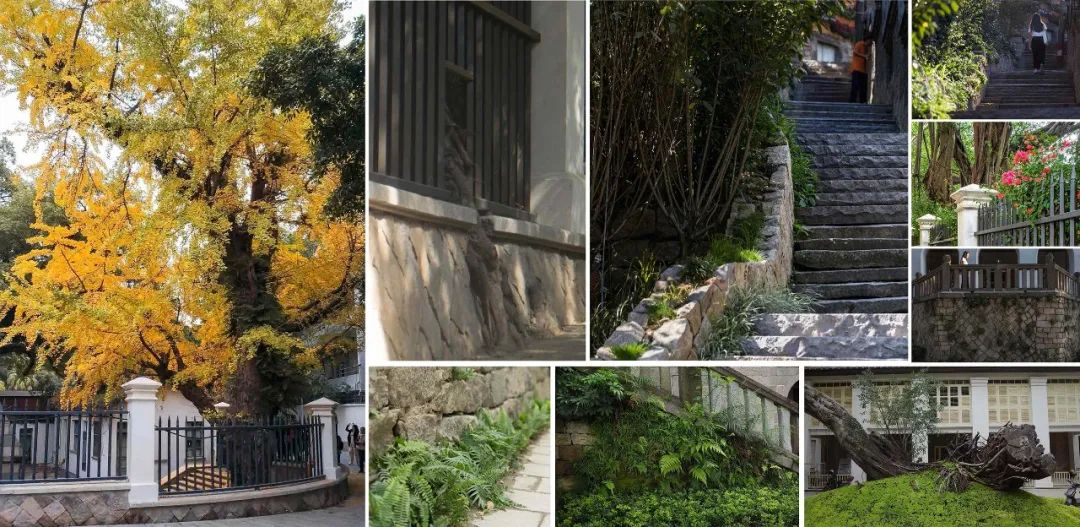
THE RENOVATION OF HISTORICAL NODES
01 Stone Church
The Stone Church is one of the most important but hidden cultural landmarks in the area. High walls had created a closed and isolated space. To recreate the appearance of the courtyard's historical appearance, the design team rebuilt the walls and courtyard, restored the Church's fence and gate, and preserved the century-old ginkgoes in the courtyard. The designers lowered the level of the buried steps at the entrance of the Church by nearly one meter to recreate the original appearance of the church building. The berm formed a double-layered pond to protect the roots of the ancient ginkgo. The discarded slate and gravel were collected to pave the inner courtyard of the Church. The landscape design of the Church creates a serene, peaceful atmosphere.
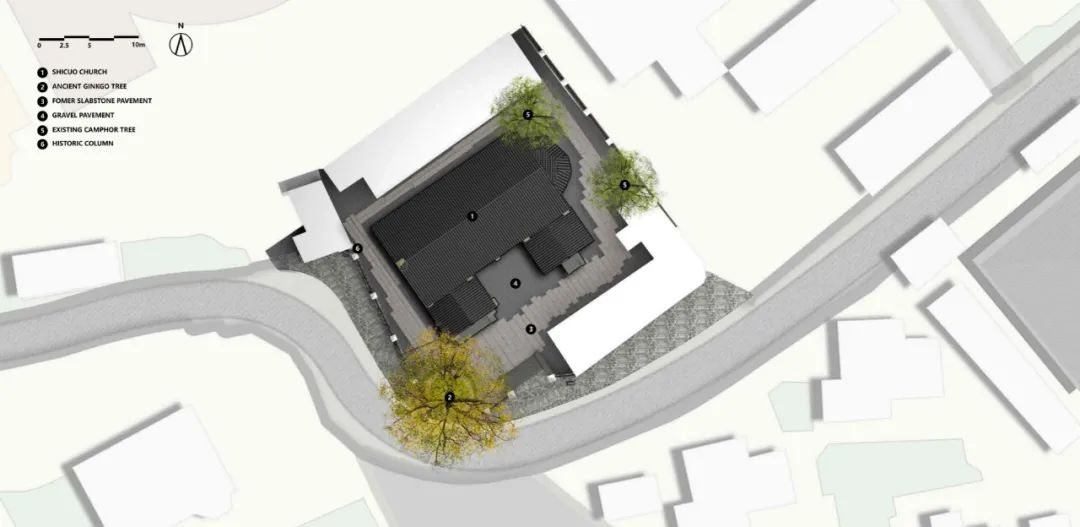
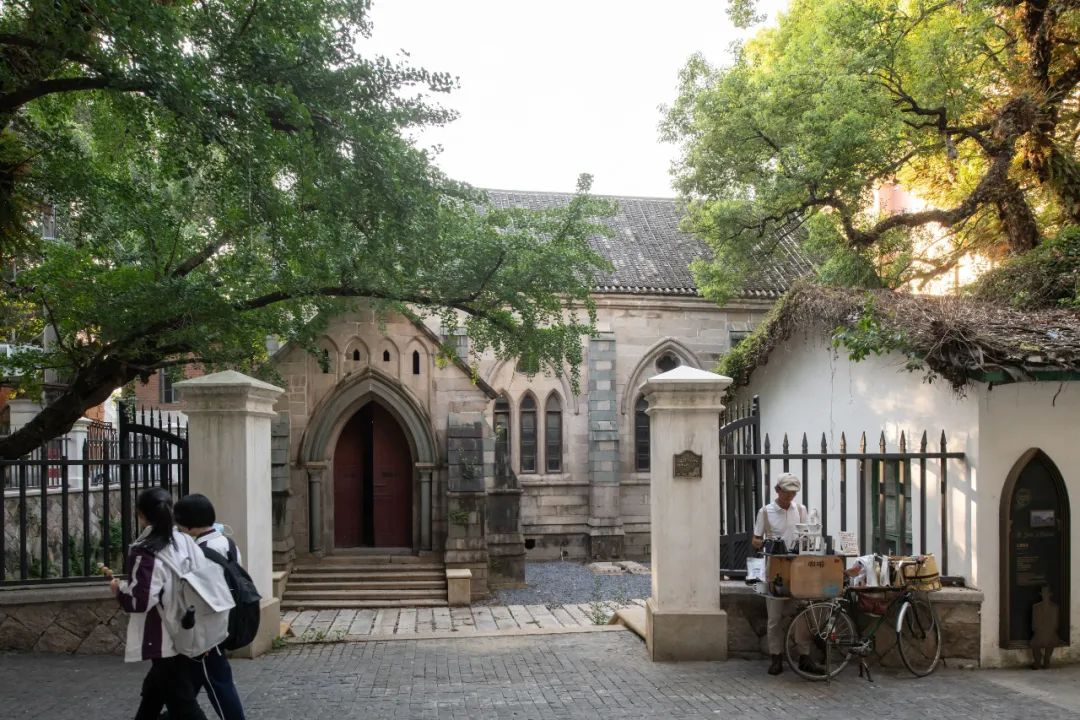
02 Fujian Customs Department
At the old Fujian Customs Department, different design operations were used to interpret the original name of Yantai Mountain, the port of the plum blossom. Historical memories were represented with detailed plum blossom patterns on paving, water features, gate, and sitting areas. The language of central axisymmetric, geometric cutting not only responds to the architectural style but also sets the classical tone of the entire design. The classical elements link with modern aesthetics by painting classical elements and recurring patterns with minimal interventions. The design injects a new soul into the site, bringing back memories of the site and simultaneously giving visitors and residents a new feeling.
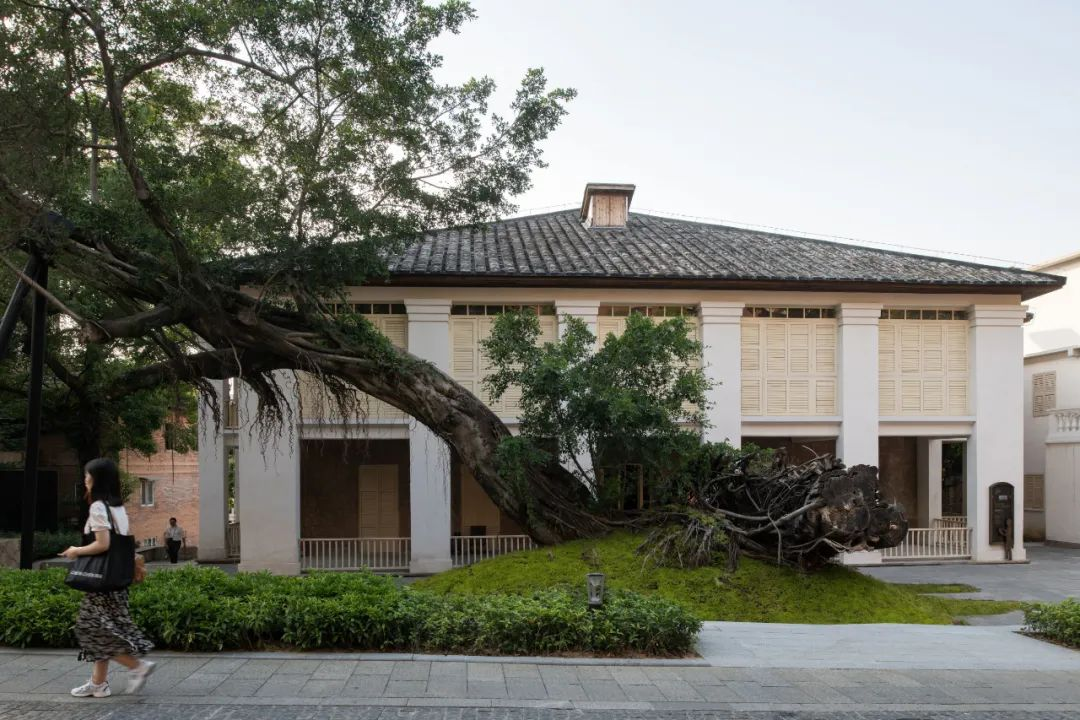
SOCIAL SERVICE
In the process of the renovation of Yantai Mountain, traces of the restoration work are hidden in the design of the site. We not only restored the original historical appearance of the area was restored for the residents and visitors. The design goes beyond appearances but also engages the people with the site. Yantai Mountain revives its vitality after a long century of change but thoughtfully using local resources.
Project Information
Name:Yantai Mountain Lequn Road micro-renewal project
Location:Fuzhou, Fujian Province, China
Site Area: 2.7ha
Landscape design:Lab D+H SH
Icon design:Liang Xiang Desigh
Photos:鲁冰,存在建筑,仓前九里
Awards: 2021 Landscape Institute Awards:Landscape Legacy Award
Source: <https://mp.weixin.qq.com/s/bjxvp6KrTwcn6Z7kv3y1Og>
Edited by Jia Mengyuan